Thingiverse
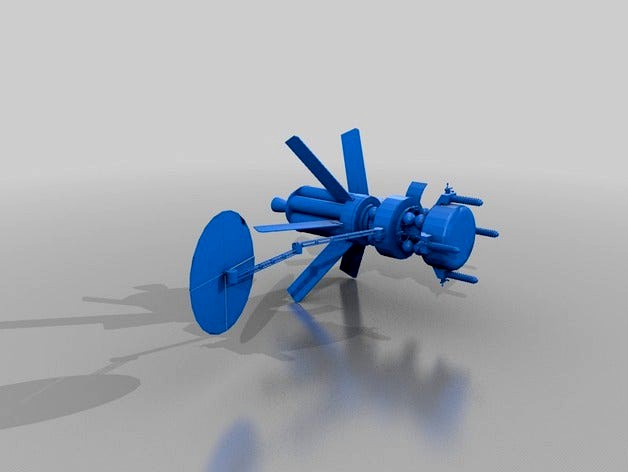
Emissicius & Stradivarius Asteroid Survey Ship by tommy99osullivan
by Thingiverse
Last crawled date: 3 years ago
As part of a project that I did recently I designed an asteroidal survey craft called the Emissicius. It will be accompanied by a SoLTeC (Solar Laser Transducer Craft, which flies alongside the ship and beams power over.). The first part of the operation consists of an asteroid survey ship which flies out before the actual mining rig flies out. This ship will also carry a Stradivarius sonic jackhammer, which is an original idea of mine.
The front mounted Stradivarius undocks from the mothercraft and flies to the surface where four large screws will embed it into the asteroid. It’s first mission is to find the asteroid’s composition. Once secured it transmits a series of sonic waves through the asteroid by means of a pressurised speaker bag in very close contact with the surface. It works under the same principle as an impactor probe, by firing sonic waves through the asteroid, seismic detectors and microphones can make an internal structure map, showing the entire makeup of the asteroid (similar to sonar), showing the weaker areas, the stronger areas, the internal structure, the topography and all the materials the asteroid is composed of and where they are positioned in the asteroid.
The second part of the ship, is the ship’s computers, batteries and instruments bay. This area holds the cameras to look at the asteroid’s surface and also to find flat areas for landing. This area also has a laser, to carve out landing areas, should they be unavailable. They can also be used to vaporise the surface regolith so that spectrometers can see the makeup of the asteroid regolith from above.
Also in the instruments bay is a landing craft, that will carry down the microphones to the surface. This drop ship (shown above), is about forty centimetres in height with a radius of the lander base at about 30 centimetres in diameter. This lander goes down to the asteroid and allows the microphones to magnetise and drive around on the surface.
The actual rollers themselves which will operate on the surface, will only work on ferrous asteroids. They receive power from one of the nearby SoLTeCs which power the mining operation. Each of these is about the size of an average iPhone, they have two screw like wheels which will rotate to drive it forward, backward and counterrotate to let it turn in 360°. When they are positioned correctly, a pair of pitons will dig into the surface of the asteroid, attaching the rover to the asteroid. When it is dug in, the wheels will demagnetise as not to interfere with the microphone. They have a drop down microphone which (when the rover is in position) will lower down to the surface and listen for the Stradivarius to output it’s sound pulse.
Once the microphones are in place, and their screws are down. The Stradivarius will let off a series of sound pulses. These pulses will map the internal structure of the asteroid and find the weak areas in the structure. This process will continue for days until the next part of the process can begin
However, since the magnets only work on ferrous asteroids, these microphones can also be dropped as a huge net which is placed on the asteroid as opposed to this rover design.
The front mounted Stradivarius undocks from the mothercraft and flies to the surface where four large screws will embed it into the asteroid. It’s first mission is to find the asteroid’s composition. Once secured it transmits a series of sonic waves through the asteroid by means of a pressurised speaker bag in very close contact with the surface. It works under the same principle as an impactor probe, by firing sonic waves through the asteroid, seismic detectors and microphones can make an internal structure map, showing the entire makeup of the asteroid (similar to sonar), showing the weaker areas, the stronger areas, the internal structure, the topography and all the materials the asteroid is composed of and where they are positioned in the asteroid.
The second part of the ship, is the ship’s computers, batteries and instruments bay. This area holds the cameras to look at the asteroid’s surface and also to find flat areas for landing. This area also has a laser, to carve out landing areas, should they be unavailable. They can also be used to vaporise the surface regolith so that spectrometers can see the makeup of the asteroid regolith from above.
Also in the instruments bay is a landing craft, that will carry down the microphones to the surface. This drop ship (shown above), is about forty centimetres in height with a radius of the lander base at about 30 centimetres in diameter. This lander goes down to the asteroid and allows the microphones to magnetise and drive around on the surface.
The actual rollers themselves which will operate on the surface, will only work on ferrous asteroids. They receive power from one of the nearby SoLTeCs which power the mining operation. Each of these is about the size of an average iPhone, they have two screw like wheels which will rotate to drive it forward, backward and counterrotate to let it turn in 360°. When they are positioned correctly, a pair of pitons will dig into the surface of the asteroid, attaching the rover to the asteroid. When it is dug in, the wheels will demagnetise as not to interfere with the microphone. They have a drop down microphone which (when the rover is in position) will lower down to the surface and listen for the Stradivarius to output it’s sound pulse.
Once the microphones are in place, and their screws are down. The Stradivarius will let off a series of sound pulses. These pulses will map the internal structure of the asteroid and find the weak areas in the structure. This process will continue for days until the next part of the process can begin
However, since the magnets only work on ferrous asteroids, these microphones can also be dropped as a huge net which is placed on the asteroid as opposed to this rover design.
Similar models
3dwarehouse
free

HSA rover with lander
...gear. it carries the hsa rover to the surface of the moon. #arm #engines #gear #hsa #lander #landing #lunar #moon #rover #surface
cg_trader
$140

Mars City colone 3d model
...lien ship land rover mars colony mars planet mars rover mars surface planet venus space craft space rover space ship venus planet
grabcad
free

Lunar Wheel Regolith Sampling System
...this system consists of a wheel system (which is similar to front landing wheel system of the airplanes) which...
grabcad
free

GSLV MR3 (Space Ship)
...dian space research organisation) built carrier which is used in chandrayaan 2 to send the lander and rover on the moons surface.
3dwarehouse
free

Planetary Lander
...samples, a component to deliver those samples to its mothership, and a main thruster. #asteroid #lander #moon #planetary #sampler
3dwarehouse
free

Terrestrial Survey Laboratory Aeroshell
...d the perception rover were both inspired by the real mars science laboratory,and the curiosity rover. #mars #probe #rover #space
grabcad
free

NASA Bucket Drum Design Challenge V4
...oth mining, discharging and scooping).
the max volume it can collect 15.5 litters
the drum was design so it can be 3d printed.
3dwarehouse
free

Terrestrial Survey Laboratory Cruise Stage
...d the perception rover were both inspired by the real mars science laboratory,and the curiosity rover. #mars #probe #rover #space
3dwarehouse
free

Unmanned Lunar Lander/Rovers Sketchyphysics
...#13 #apollo #bobrichkinoff_iii #land #lander #landing #mars #moon #nasa #richard #rover #rovers #sketchyphysics #sketchyphysics_2
cg_trader
$52

Survey Boat Ship Vessel 37 M
...p for survey purposes, tugboats and can also be used as marine mining support vessels. with the principal dimensions as follows :
Tommy99Osullivan
thingiverse
free

Pachacuti Mk.1.1 FF Rocket Engine by tommy99osullivan
... there's also a lot of the designs as sheets there as well, which is helpful to demonstrate the inner workings of the engine.
thingiverse
free

Morning Star Class Interplanetary Transporter by tommy99osullivan
... the model is quite large so i might upload some of the individual components in the future if there's enough interest.
Stradivarius
3d_ocean
$25

Stradivarius violin
...lin called “the messiah” uv textured with normal maps for some of the parts. you’ll find the model with subsurf applied and a ...
turbosquid
$19

Modern Violin
...modern violin turbosquid royalty free 3d model stradivarius violin for download as blend on turbosquid: 3d models...
3d_sky
free

Facade systems for kitchen and cabinet furniture Stradivarius. Part 2 of 3.
... stradivarius http://www.russta.ru/catalog/?section_id=9&element_id=21. part 2 of 3. pilasters, columns, cornice molding.
3d_sky
free

Facade systems for kitchen and cabinet furniture Stradivarius. Part 3 of 3.
...ussta.ru/catalog/?section_id=9&element_id=21. part 3 of 3 portal, extractor tarelochnitsa, butylochnitsa, frame terminal.
3d_sky
free

Facade systems for kitchen and cabinet furniture Stradivarius. Part 1 of 3.
...tems from russta. series stradivarius http://www.russta.ru/catalog/?section_id=9&element_id=21. part 1 of 3. the facades.
thingiverse
free

Veronica (the robber) by Peda
...peda thingiverse episode 1 - the dissonance of the stradivarius ...
thingiverse
free

A Stradivari-Inspired Headphones Stand by Cosimo_Ligorio
...you like it and have fun! here the inspiration: https://en.wikipedia.org/wiki/stradivarius ...
thingiverse
free

Trumpet Tabs by TheCharlesChen
...slide ring, and pinky hook based on my bach stradivarius if you used abs, you can print these in...
thingiverse
free

Printable Trumpet by LtDan
...printable trumpet. it was modeled somewhat after a bach stradivarius i have printed one myself and the sound quality...
Survey
turbosquid
$89

Survey Ship
...osquid
royalty free 3d model survey ship for download as max on turbosquid: 3d models for games, architecture, videos. (1484419)
turbosquid
$20

antique surveying scope
... available on turbo squid, the world's leading provider of digital 3d models for visualization, films, television, and games.
3d_export
$49

3d wfirst model
...3d wfirst model 3dexport wfirst (wide field infrared survey telescope) 3d...
cg_studio
$49

Hand-Held Detector3d model
...counter particle detector müller gamma rays hand held radiation survey instrument electronics .obj .max .fbx .3ds - hand-held detector...
3ddd
free

RH_20TH_NAUTICAL_SURVEY_MAP
..."d x 59"h; 15 lbs (116,84w x 5,08d x 149,86h cm)
в архиве:
- coronarender
- vray 2011
- fbx
- obj
- renders
- текстуры
3d_export
free

first stage reducer
...especially for the assembly and disassembly of reducer when surveyng and mapping for college...
3d_export
$15

hovercraft lst
...as specialised transports in disaster relief, coastguard, military and survey applications, as well as for sport or passenger service....
free3d
free

Survey Level no tripod v1
...survey level no tripod v1
free3d
survey level no tripod v1 printable, low poly model.
thingiverse
free

Survey level sensor bracket by Jbelite
...survey level sensor bracket by jbelite
thingiverse
mount for survey laser sensor
thingiverse
free

Survey Traverse Disk by zgooch
...ch
thingiverse
disk that fits a 60d nail for traversing in land survey. the disk helps keep the nail from sinking in the ground
Asteroid
3d_ocean
$12

Asteroid
...asteroid
3docean
asteroid comet meteorite satellite surfase
two high poly model of the asteroid.
3d_ocean
$2

Asteroids
...om bump mapping on surface of asteriods for the organic look. you can add textures and also resize this is ready to render. (r2r)
3d_ocean
$8

Asteroids
...lod level & fractured version. lod0: ~1000 tri lod1: ~500 tri 2048² diffuse & normal. webgl preview: https://skfb.ly/ythp
3d_export
free

asteroids pack
...2 - 38084 faces asteroid 3 - 53392 faces asteroid 4 - 10084 faces each of the asteroids has a texture: color map 8k normal map 8k
turbosquid
$5

Asteroid
...urbosquid
royalty free 3d model asteroid for download as c4d on turbosquid: 3d models for games, architecture, videos. (1509610)
turbosquid
$24

Asteroid
...d
royalty free 3d model asteroid for download as max and obj on turbosquid: 3d models for games, architecture, videos. (1254098)
turbosquid
free

Asteroid
...d
royalty free 3d model asteroid for download as c4d and obj on turbosquid: 3d models for games, architecture, videos. (1658204)
3d_ocean
$16

Detailed Asteroids
... models, perfect for use in space and sci-fi scenes… the extinction of the dinosaurs, the asteroid belt between earth and mars...
turbosquid
$16

Asteroid
...alty free 3d model asteroid for download as max, obj, and fbx on turbosquid: 3d models for games, architecture, videos. (1392036)
turbosquid
$29

asteroid
...free 3d model asteroid for download as c4d, obj, fbx, and 3ds on turbosquid: 3d models for games, architecture, videos. (1600429)
Ship
3d_export
$5
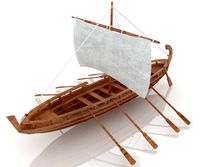
ship
...ship
3dexport
ship
3d_export
$5

Ship
...ship
3dexport
ship
archibase_planet
free

Ship
...ship
archibase planet
ship
ship n280909 - 3d model (*.gsm+*.3ds) for 3d visualization.
3d_export
$5
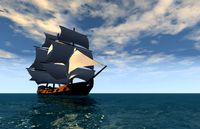
ship
...ship
3dexport
the ship is well suited for games.
3d_export
free
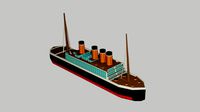
ship
...ship
3dexport
a lowpoly ship similar to the titanic...
archibase_planet
free

Ship
...ship
archibase planet
cruiser cruise ship
cruise ship n010807 - 3d model for interior 3d visualization.
archibase_planet
free
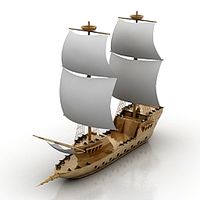
Ship
...ship
archibase planet
sailing vessel ship
ship n140110 - 3d model (*.gsm+*.3ds) for interior 3d visualization.
archibase_planet
free
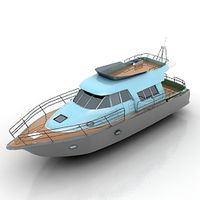
Ship
...ship
archibase planet
cutter launch ship
ship n010710 - 3d model (*.gsm+*.3ds) for exterior 3d visualization.
archibase_planet
free

Ship
...ship
archibase planet
sailing vessel ship vehicle of the sea
ship n010708 - 3d model (*.gsm+*.3ds) for interior 3d visualization.
turbosquid
$15

ship destroyer
...ip,frigate ship,ship,corvette ship for download as ma and fbx on turbosquid: 3d models for games, architecture, videos. (1435217)
